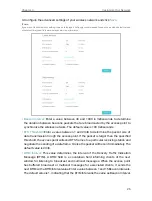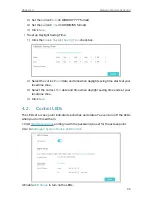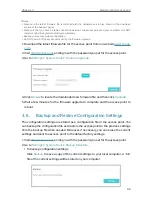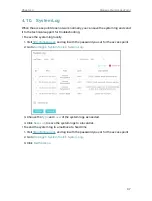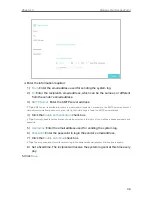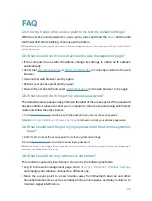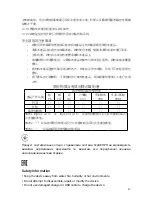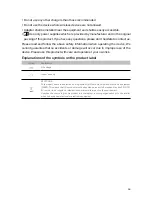
39
FAQ
Q1. How do I restore the access point to its factory default settings?
With the access point powered on, use a pin to press and hold the
Reset
button until
the Power LED starts blinking, then release the button.
Note:
Resetting the access point will clear all previous configurations, and the access point will reset to the default
Access Point mode.
Q2. What should I do if I cannot access the web management page?
• If the computer has a static IP address, change its settings to obtain an IP address
automatically.
• Verify that
http://tplinkap.net
or
http://192.168.0.254
is correctly entered in the web
browser.
• Use another web browser and try again.
• Reboot your access point and try again.
• Power off your host AP and enter
http://tplinkap.net
in the web browser to try again.
Q3. What should I do if I forget my wireless password?
The default wireless password is printed on the label of the access point. If the password
has been altered, please connect your computer to the access point using an Ethernet
cable and follow the steps below:
1. Visit
http://tplinkap.net
, and log in with the password you set for the access point.
2. Go to
Settings
>
Wireless
>
Wireless Settings
to retrieve or reset your wireless password.
Q4. What should I do if I forget my login password of the web management
page?
1. Refer to Q1 to reset the access point to its factory default settings.
2. Visit
http://tplinkap.net
, and create a new login password.
Note:
You’ll need to reconfigure the access point to surf the internet once the access point is reset, and please mark
down your new password for future use.
Q5. What should I do if my wireless is not stable?
This could be caused by interference. You can try the following methods:
• Log in to the web management page. Go to
Settings
>
Wireless
>
Wireless Settings
and change your wireless channel to a different one.
• Move the access point to a new location away from Bluetooth devices and other
household electronics, such as cordless phones, microwaves, and baby monitors, to
minimize signal interference.

